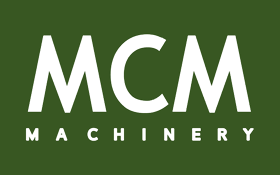- No product in the cart.
Gutters are an important part of any dwelling’s roofing system, designed to channel rainwater away from the foundation and prevent damage. Choosing the right type of gutter can significantly impact the longevity and efficiency of your home’s drainage system. With various options available, understanding the differences between them is essential for making an informed decision. This article explores the most typical types of gutters and affords guidance on selecting the best one in your needs.
1. K-Style Gutters
K-style gutters, also known as ogee gutters, are among the many most popular decisions for residential homes. Named for their distinctive, ornamental shape that resembles the letter “K,” these gutters have a profile that resembles crown molding. The primary advantages of K-style gutters are their high capacity and aesthetic appeal. They will handle more water than traditional rounded gutters resulting from their flat back and backside, which provides a bigger surface area. K-style gutters are versatile and available in various supplies, including aluminum, vinyl, and copper, making them suitable for different architectural styles.
2. Half-Round Gutters
Half-spherical gutters are characterized by their semicircular form and are sometimes seen on older or more traditional homes. Their design permits water to flow smoothly without creating turbulence, reducing the risk of debris buildup and clogs. Half-spherical gutters are typically made from materials like copper, metal, or aluminum, and so they come with a classic, timeless look that complements traditional architecture. Nevertheless, they tend to have a lower water capacity compared to K-style gutters, which could be a consideration depending on the quantity of rainfall in your area.
3. Box Gutters
Box gutters, or hidden gutters, are integrated into the roofline and are not immediately visible from the ground. They are commonly utilized in houses with a more modern or sleek design and are built into the eaves of the roof. This type of gutter is particularly efficient for managing large volumes of water and is commonly utilized in areas with heavy rainfall. Box gutters will be made from various supplies, together with metal or fiberglass, and they’re typically customized-constructed to fit the precise dimensions of your roofline. Nevertheless, their set up could be more complex and expensive compared to other gutter types.
4. Continuous Gutters
Continuous gutters, also known as seamless gutters, are manufactured in one steady piece, which eliminates seams and joints which might be frequent in sectional gutters. This design reduces the likelihood of leaks and provides a more streamlined appearance. Steady gutters are typically made from supplies like aluminum or metal and are custom-minimize to fit the dimensions of your home. Their seamless nature makes them a popular alternative for homeowners seeking a low-upkeep option with a sleek, modern look. Installation requires professional expertise to make sure proper fitting and alignment.
5. Fascia Gutters
Fascia gutters are mounted directly to the fascia board, which is the vertical board that runs along the sting of the roof. This type of gutter integrates with the roofline, providing a clean, unobtrusive appearance. Fascia gutters are often utilized in up to date properties and might be made from supplies similar to aluminum or vinyl. They are efficient for managing water runoff but may require common upkeep to make sure they remain clear of debris. The set up of fascia gutters may be more straightforward compared to different types, especially if the present fascia board is in good condition.
Selecting the Right Gutter for Your Home
When choosing the suitable gutter system for your house, consider factors such because the architectural style of your house, local climate, and maintenance requirements. K-style gutters are versatile and supply high capacity, making them a good selection for a lot of homes. Half-spherical gutters provide a traditional look however might not handle massive volumes of water as efficiently. Box gutters are ideal for modern designs and heavy rainfall however might be more expensive. Steady gutters provide a seamless, low-maintenance option, while fascia gutters provide a sleek, integrated appearance.
Consulting with a professional gutter installer can assist you make the only option based mostly on your particular needs and preferences. They will assess your home’s requirements, recommend suitable materials, and guarantee proper installation to protect your property from water damage and preserve its structural integrity.
In conclusion, understanding the completely different types of gutters and their respective benefits may also help you select the fitting option to your home. Whether or not you prioritize aesthetics, water capacity, or ease of maintenance, there’s a gutter system that will meet your needs and enhance the performance of your own home’s drainage system.
If you loved this posting and you would like to receive far more details concerning new rain gutters installation kindly visit the web-page.

